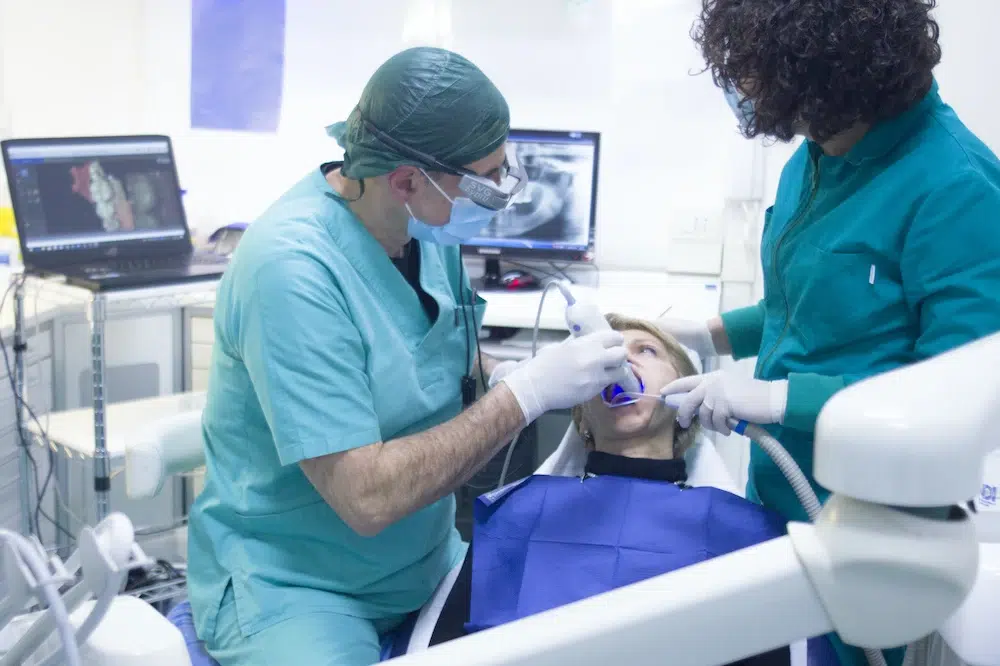
Oral Appliance Therapy For Obstructive Sleep Apnea (OSA)
You’re not alone if you’re battling Obstructive Sleep Apnea (OSA). Millions are in the same restless boat, seeking an escape from nightly breathing disruptions and daytime fatigue.
While CPAP machines are often the go-to solution, they’re not the only game in town.
Enter Oral Appliance Therapy—a comfortable, convenient, and quieter alternative that’s changing lives one night at a time.
Imagine no more bulky masks, no more humming machines, just a simple device much like a sports mouthguard.
Could this be the sleep solution you’ve been dreaming of? Let’s delve into oral appliance therapy for obstructive sleep apnea (OSA).
Benefits Of Oral Appliance Therapy For OSA
Oral Appliance Therapy offers a simple way to treat Obstructive Sleep Apnea (OSA). Unlike other methods, this one is easy and has many upsides. Let’s delve into 5 key benefits.
Non-Invasive And Comfortable
Some treatments for sleep issues require surgery or bulky devices. Oral Appliance Therapy uses a small mouthpiece. You simply wear it while you sleep. It’s non-invasive, which means no surgeries. And most people find it comfy.
Improved Sleep Quality
Bad sleep makes you feel tired and worn out. Oral Appliance Therapy changes that. It helps you breathe better when you sleep. This leads to better sleep quality. You’ll wake up feeling refreshed. Tests prove it!
Reduced Apnea Episodes
Sleep apnea is about having trouble breathing when you sleep. This therapy cuts down those episodes. So, you breathe easy. Studies show the mouthpiece can reduce episodes by more than 50%.
Enhances Daytime Alertness
Bad sleep leads to a foggy mind the next day. With this therapy, you sleep well.
And when you sleep well, you’re alert the next day. This is a big deal. Being alert helps in your job, and driving, and keeps you safe.
Portable And Travel-Friendly
Some sleep aids are large and hard to carry. This is a problem if you travel. Oral appliances are different.
They are small and fit in a case the size of your hand. Easy to pack, easy to carry. Take it anywhere you go.
How Oral Appliance Therapy Works
Oral appliance therapy is a simple yet effective treatment often used for sleep apnea and snoring. The therapy involves a device that shifts the position of your jaw.
This simple change can improve airflow, reduce snoring, and increase overall comfort. Let’s dive into the specifics.
Customized Jaw Positioning
The key to the success of oral appliance therapy is a custom-fit device. It is not a one-size-fits-all approach. Dentists create a mold of your teeth and jaw to make a device just for you.
This ensures that your jaw moves to the exact position where it can open up your airway for better breathing. The custom fit also makes the device comfortable to wear.
Promotes Airway Patency
The term “airway patency” might sound fancy, but it simply means keeping the airway open. When your jaw is in the right spot, your airway remains open.
This allows you to breathe easier and sleep better. An open airway is the main goal of the treatment and the reason it works so well for many people.
Reduces Snoring
One clear benefit is less snoring. When your airway is open, air moves freely. The free flow of air decreases the vibrations in your throat, which are the main cause of snoring sounds.
People who use this device often report that their snoring drops significantly, which means better sleep for them and their partners.
Easy To Wear And Maintain
Many people love the device because it is easy to use. You just place it in your mouth before you go to sleep.
Unlike other treatments, there are no machines or tubes involved. Cleaning is also a breeze. A simple rinse and air dry, and you are good to go for the next night.
High Patient Compliance
“Compliance” here means how well people stick with the treatment. The numbers are good. Most people who try the device keep using it. Why?
Because it works and it’s easy to use. It’s also less invasive than other options, like a CPAP machine. So, if you use it, chances are you will stick with it.
Choosing The Right Oral Appliance
When you need an oral appliance, picking the right one is key. It’s more than just shopping; it’s about your health.
Professional Dental Evaluation
First, talk to your dentist. Your dentist has years of training and knows your teeth well. They can tell you which device suits you best.
They’ll check your teeth, maybe even take X-rays, and give advice based on facts. Always start with a dental visit.
Custom-Fit Devices Vs. Over-The-Counter
There are two types of devices: custom-fit and over-the-counter. Custom-fit devices are made just for you. Your dentist takes molds of your teeth and orders a device that fits like a glove.
On the other hand, over-the-counter devices are a one-size-fits-all deal. They’re not as snug and might not work as well. Custom-fit devices cost more but often do a better job.
Considering Individual Needs
No two mouths are the same. You have your own needs. Some people grind their teeth. Some have sleep apnea. Others may have jaw pain. Your dentist will think about these things.
They’ll pick a device that tackles your specific issues. You have to speak up and let your dentist know any symptoms or problems you have.
Monitoring Treatment Progress
After you get your device, the work isn’t over. You need to see if it’s doing its job. Your dentist will have you come back for check-ups.
They’ll look for signs of improvement. They might adjust the device or try a different one if things are not going well. Keep track of how you feel and share it with your dentist.
Addressing Dental Health Concerns
Sometimes, new issues pop up. You could get sore gums or find it hard to breathe with the device. If this happens, go back to your dentist.
They’ll look at the problem and figure out a fix. They might pick a different device or make small changes to the one you have.
Oral Appliance Vs. CPAP
When it comes to treating sleep apnea, two main options are Oral Appliances and CPAP machines. Both have pros and cons.
Let’s dive deep to find out which is better in terms of comfort, effectiveness, being partner-friendly, improving sleep, and overall life quality.
Treatment Tolerance And Comfort
Oral Appliance:
Most people find oral appliances easier to use. These are like mouthguards and fit in your mouth. They’re easy to wear, and you can talk or drink water with them.
CPAP:
This device uses a mask that covers your nose or both your nose and mouth. It can feel bulky and often takes time to get used to.
The Winner:
Oral appliances win in the comfort zone. Most people find them more tolerable for long-term use.
Effectiveness For Mild To Moderate OSA
Oral Appliance:
Works well for mild to moderate sleep apnea. It helps by moving the lower jaw forward, which opens the airway.
CPAP:
This is the go-to treatment for all levels of sleep apnea, including severe cases. It uses air pressure to keep your airways open.
The Winner:
For mild to moderate cases, both options work. But CPAP is more versatile and can treat severe cases too.
Partner-Friendly Option
Oral Appliance:
It makes almost no noise. Your partner won’t even know you’re wearing it.
CPAP:
The machine makes a soft hum. Some people find the noise bothersome.
The Winner:
If you share your bed, an oral appliance is the quieter choice.
Improves Sleep Quality
Oral Appliance:
Helps you sleep better by keeping the airway open. Most users report better sleep quality.
CPAP:
Also improves sleep by preventing airway closure. But some people find it hard to sleep due to the noise and mask.
The Winner:
Both improve sleep, but oral appliances get extra points for comfort.
Positive Impact On Quality Of Life
Oral Appliance:
Easy to use and carry, even when traveling. Many users report a better mood and more energy.
CPAP:
Highly effective but less convenient. Some users feel tied down due to the size of the machine.
The Winner:
For ease and freedom, oral appliances have a slight edge.
FAQs
1. How Does Oral Appliance Therapy Treat OSA?
Oral appliance therapy treats OSA by moving the lower jaw forward. This opens up the airway, making it easier to breathe during sleep.
2. What Are The Benefits Of Oral Appliances For OSA?
The benefits of oral appliances include comfort, ease of use, and being quiet, making them partner-friendly. They’re also portable, ideal for travel.
Final Words
Oral appliance therapy is a safe and effective treatment option for OSA. It is less invasive than surgery and can be just as effective. When you are considering treatment for OSA, talk to your doctor about oral appliance therapy.
In addition to reducing snoring and improving sleep quality, oral appliance therapy can also help to reduce the risk of other health problems associated with OSA, such as heart disease, stroke, and diabetes.
Oral appliance therapy may be the right treatment for you if you are tired of snoring and feeling tired all the time. Talk to your doctor today to learn more.



